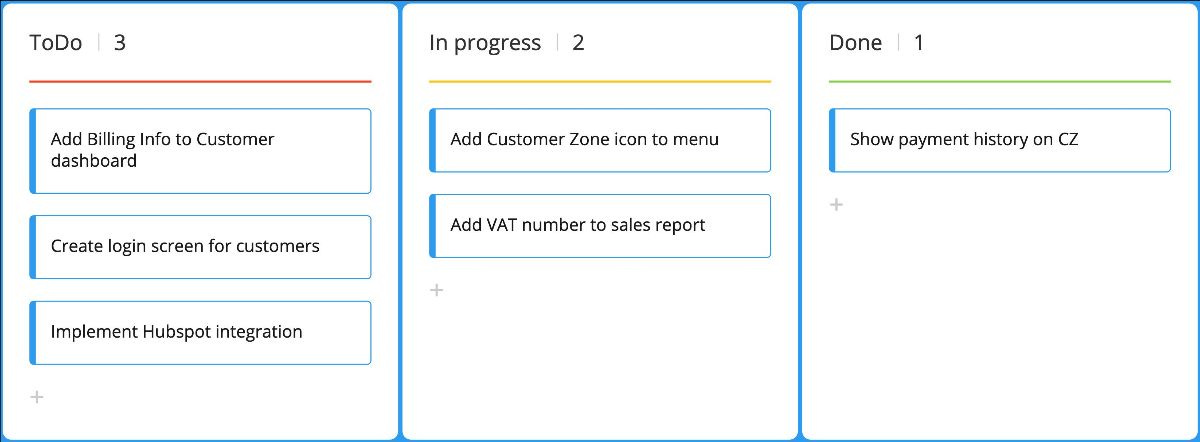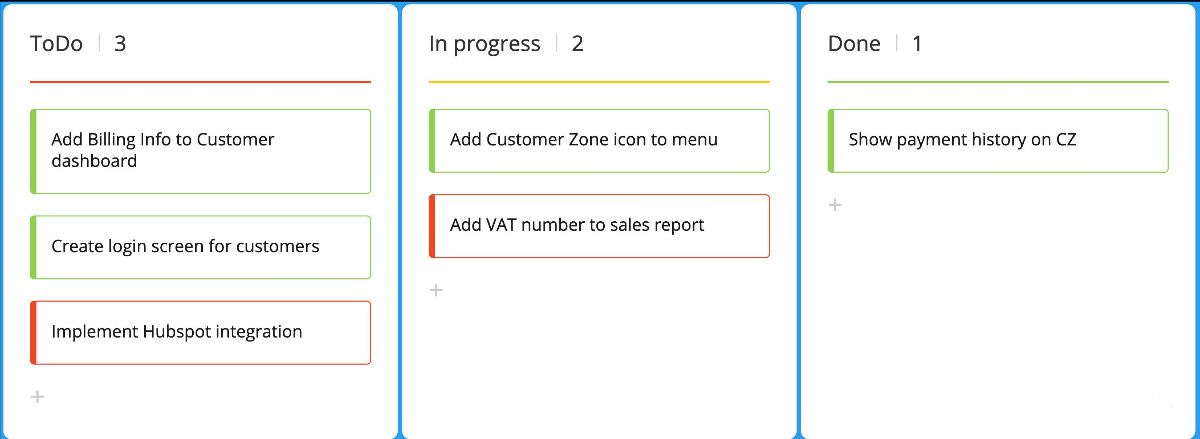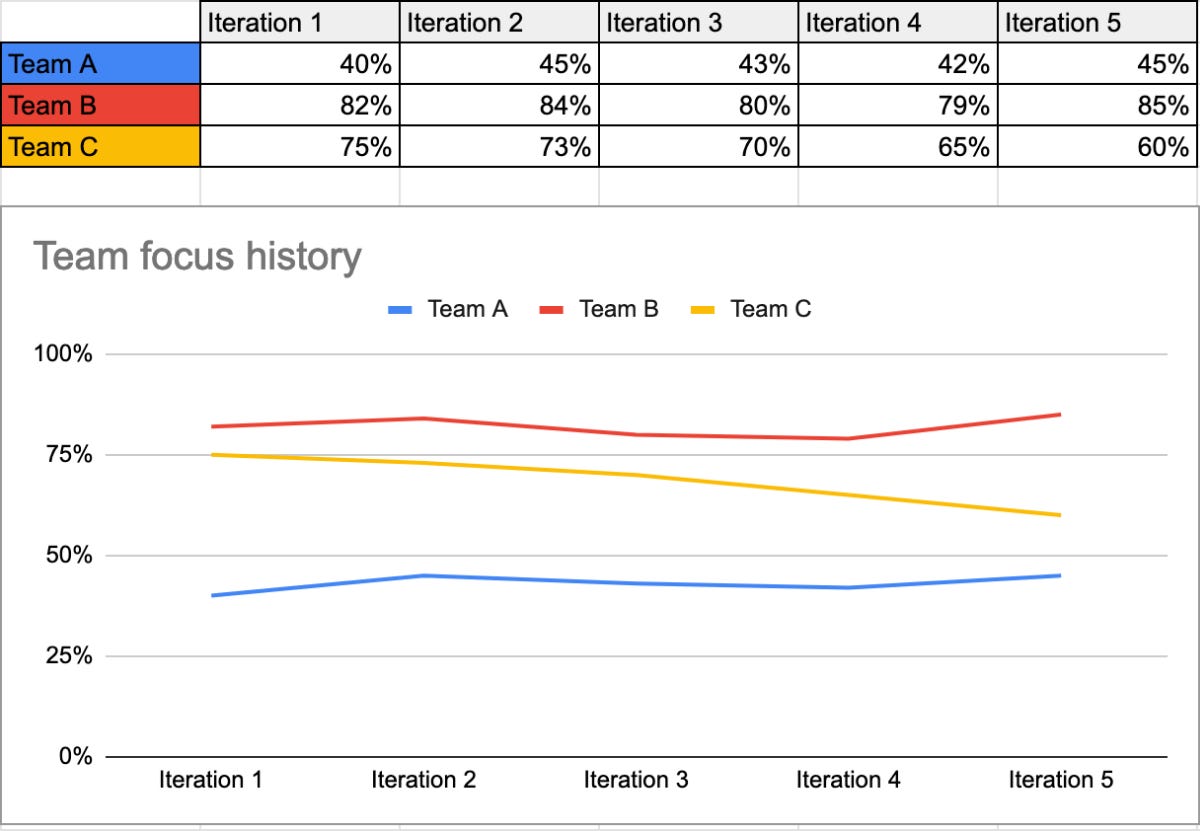Focused teams work toward a common short-term goal. Instead of building unrelated Jira tickets, they spend three weeks doubling down on a single problem together. No distractions, no interruptions, no diversions.
Focus is the prerequisite for high-performing teams. There’s instant knowledge sharing and team building when we fight the same problem together. We get stuff done. It’s truly awesome.
However, if you’ve ever tried to focus on a single issue for a few weeks, you’ve experienced how fast we revert to the bad habit of scattering our attention.
“I know we’re working on the new Customer Zone, but one of our clients urgently needs a REST endpoint…“
“Can you jump on a call with Marketing to discuss ideas for the Hubspot integration?“
In an ideal scenario, the team could say, “No, not now.” But we never build software in an ideal scenario.
Improving your team’s focus level is a learned skill. It’s not just something we can decide to do on a Monday morning. It takes time.
The first step to improving our focus is measuring just how focused we are. What gets measured gets managed.
So, how do we measure focus?
First, we need to be able to list all the tickets we are currently working on. In most teams, that’s all the tickets on the Kanban board.

Next up, we identify the tickets that work towards our focus. Let’s say we’re working on that first version of the Customer Zone. Most tasks will be related to that goal. Those are the tasks in focus (marked in green below). A few won’t be. They are out of focus (marked in red).
In most teams, the in-focus tasks will be part of a parent “Customer Zone” ticket or contain a “Customer Zone” label.

Dividing the number of tickets in focus by the total number of tickets gives us a handy percentage: the team is 66% focused. We don’t need to do this manually. With a little bit of JQL or Excel magic, we can easily automate this metric.
When we start collecting these metrics per team, we get an interesting overview of historical focus levels. We can see how our efforts have improved team focus over time. We can identify issues with specific teams. We get an early warning system for when focus starts to slip.

We can see that Team A struggles to focus, while Team B manages to do what they intended. Team C is clearly losing focus for one reason or another.
When you first start measuring focus, you’ll be surprised just how little you work on in-focus tasks. These insights can feed into decision-making and retrospectives.
Why don’t we get around to doing the things we say we want to do?
Do too many bugs pop up? Is it customer support? Do priorities shift? We’ll need a completely different approach, depending on the root cause.
This Focus Chart gives us valuable insights into where we are and how our teams are evolving.
We can also use it for roadmap planning. If Team A only gets to work on their focal point half the time, it might make sense to stretch their time-boxes. Or add more downtime in between focused work.
Measuring your team’s focus level is the first step toward making long-term planning more predictable.
It’s quick, flexible, and powerful.
Try it out, and let me know where you landed.